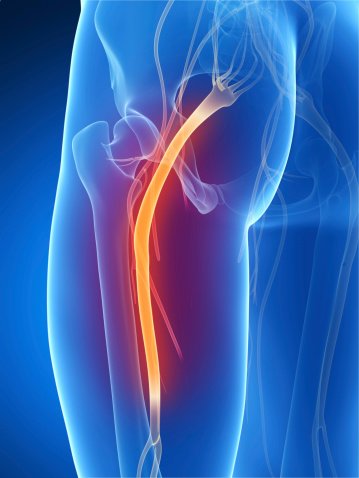How do you fix your sciatic nerve?
The Sciatic nerve is the longest and widest nerve in the human body. It originates at the lower back, branches out from the spine and descends down through the buttock and in the back of the leg.
The Sciatic nerves role is to innervate the lower back and the lower extremities (legs). The sciatic nerve contains both sensory and also motor neurons meaning it is a mixed function nerve that assists movement and sensation of the skin.
When the sciatic nerve is affected due to muscular or fascial tension, inflammation or disc bulge it can have a direct impact on the areas it innervates, affecting movement (motor function) and sensory function (pins and needles, numbness, irritated skin).
One of keys to fixing sciatic nerve pain is to remove the tension, inflammation or disc bulge at the area/s affecting the nerve. The 2 most common areas are at the lower spine, where the sciatic nerve branches out from the lumbar spine and second, deep in the buttock region where the sciatic nerve descends through the pelvis past the external rotator muscles of the hip.
If the impingement of the sciatic nerve is occurring at the lower back, then the key to fixing the condition is to look at the underlying cause behind the tension, inflammation and or disc bulge present. Often times one must look beyond purely the structures of the lower back and the sciatic nerve itself, and instead addressing the postural imbalances present in the body that are having a direct impact on the lower back region. A common postural imbalance is where the anterior muscles become more dominant that the posterior muscles of the body. This imbalance leads to what is referred to as an anterior pelvic tilt, where the entire pelvis is tilted downward, forward of the persons midline. In order to maintain a level eyeline, the person's spine must compensate by creating more excess curves in the lumbar, thoracic and cervical regions. This compensation pattern often has the greatest impact at the area where the sciatic nerve branches out from the lower back hence creating the sciatica condition.
The more direct, yet potentially most frequently misdiagnosed source of sciatic nerve impingement occurs deep within the buttock. Whilst the true underlying cause is often the same as with a lower back impingement, meaning that postural imbalances need to be addressed in order to provide lasting relief to the sciatica nerve condition, in many cases eradicating the tension present in the external rotators of the hip can produce instant relief. Postural imbalances result in a weakness to the major gluteal muscle, the gluteus maximus muscle. The deeper more intrinsic muscles that are designed to rotate the hip carry much of the load to compensate for the weakness in what should be the largest, strongest muscle in the human body. These muscles shorten and contract due to the overload which internally rotates the hip and directly compromises the space where the sciatic nerve descends through the pelvis.
Whether the source of the sciatic nerve pain, stems from the lower back or the buttock region, addressing the true underlying cause being postural imbalances will provide rapid and lasting relief to your flared up and angry sciatic nerve.
Back Solution across America has a proven record with acute and chronic back pain sufferers exceeding in excellence across the country. We have treated thousands of patients that range from Olympic athletes, professional athletes as well as everyday pain sufferers. Our rapid growth across the country will ensure a local clinic will be in your area soon to address your acute and chronic back pain.

